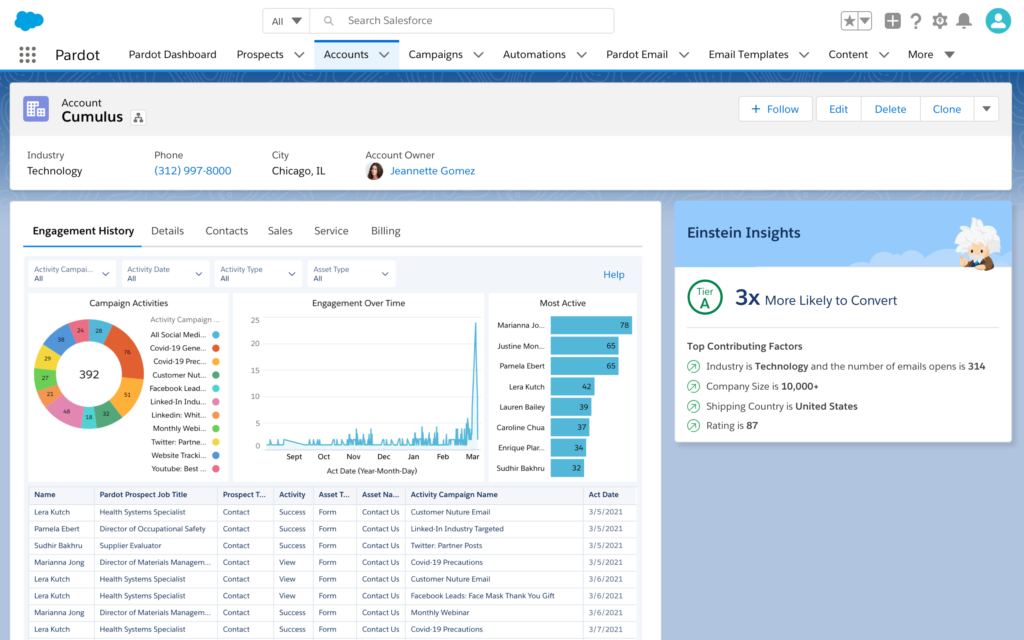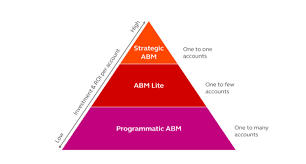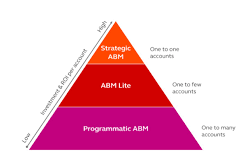The longer one is involved in marketing, the more lessons are learned, right? The answer is usually. While some tried and true tactics lose their efficacy over time, new methods evolve to replace or augment them. Moving to an ABM model is one of the newer tactics. Learn more.
Despite recognizing the theoretical value of account-based approaches, marketers find it challenging to depart from the lead-based strategies they’ve relied on for years. Even when data analysis reveals the inefficiency of these tactics, letting go remains a struggle. For instance, almost 68% of individuals abandon forms, resulting in the immediate loss of the majority of leads. Even those completing the form often provide false information, leading sales teams to pursue the wrong leads, wasting time and resources.
Moving to an ABM model, consider these helpful steps:
Leverage Intent and Engagement Insights:
- Utilize intent and engagement insights of your prospects to communicate with your best accounts using the right content, at the right time, and on their terms and desired channels.
Identify “Key Indicators”:
- Find the “key indicators” when you can help the buyer and significantly increase your chance of winning their business and long-term loyalty. If there is a webinar or video that a large percentage of your buyers view prior to purchase, track that as a key indicator or magic moment of buyer readiness.
Select the Right Target Accounts:
- Develop target company personas incorporating data points from demographics, psychographics, technographics, and the life cycle of the target entities. Key target accounts might be based on lifetime value, or any metrics to help with predictable revenue growth.

Map the Nonlinear Account Journey:
- Map the non-linear account journey to a linear set of buying stages. Non-linear journeys can have customers entering, exiting, jumping, turning back, or getting stuck in the process. Plan for steps to catch and re engage these leads.
Coordinate Across Sales and Marketing Teams:
- Plan a pipeline strategy that involves ongoing coordination between marketing and sales teams. Unlike traditional lead generation, successful account engagement in Account Based Marketing requires proactive collaboration from the start.
Create Customized Content:
- Develop customized content for compelling site experiences across various channels, including websites, social media, paid media campaigns, email, events, partnerships, sponsorships, and e-commerce.
Articulate and Meet ABM Goals:
- Clearly articulate and meet the goals of your account-based advertising program.
Measure ABM Programs:
- Measure ABM programs and attribute ROI at every stage of the funnel.
While the belief in the effectiveness of gating “high-value” content persists, B2B buyers are increasingly unwilling to sacrifice anonymity for readily available online information. ABM isn’t just about prioritizing accounts over leads; it’s also about actively targeting the right accounts in the market to buy and executing relevant outreach across their buying team.

End-to-end ABM software platforms typically include core features such as analytics, prospecting tools, engagement monitoring, lead scoring, and marketing automation. Salesforce’s Account Engagement is a recommended platform.
Account-based marketing (ABM) is a strategic approach that focuses on high-value accounts in a market or business, creating personalized buying experiences for better customer acquisition, relationship-building, and business growth. Tectonic can assist in deploying and customizing your Salesforce platform and marketing automation tools, collaborating with you to develop a strong ABM plan tailored to your business. Contact Tectonic today.










